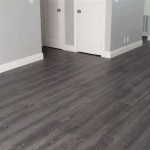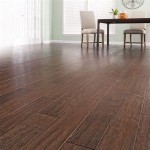Laying Hardwood Floors on Concrete Slab
Hardwood flooring offers timeless elegance and durability, making it a popular choice for homeowners. While traditionally installed over plywood subfloors, advancements in installation techniques now allow for successful hardwood floor installation directly over concrete slabs. This article explores the key considerations and steps involved in laying hardwood floors on a concrete slab.
Moisture Mitigation is Crucial
Concrete slabs are inherently porous and susceptible to moisture. Excessive moisture can damage hardwood flooring, causing warping, buckling, and mold growth. Therefore, moisture mitigation is the most critical aspect of installing hardwood over concrete. Before installation begins, the concrete slab's moisture content must be tested using industry-standard methods like a calcium chloride test or a relative humidity test. Results should fall within acceptable ranges specified by the flooring manufacturer.
Vapor Barriers and Subfloor Systems
Several methods can be employed to create a moisture barrier between the concrete and the hardwood flooring. One common approach involves using a 6-mil polyethylene film as a vapor retarder directly over the concrete slab. Alternatively, specialized subfloor systems designed for concrete slabs can be utilized. These systems often incorporate a built-in vapor barrier and provide a level surface for installation.
Acclimation of Hardwood Flooring
Hardwood flooring is a natural product that expands and contracts with changes in temperature and humidity. Before installation, the flooring must acclimate to the environment where it will be installed. This typically involves placing the unopened boxes of flooring in the room for several days to allow the wood to adjust to the ambient temperature and humidity levels. This crucial step helps minimize dimensional changes after installation.
Choosing the Right Installation Method
Several methods are suitable for installing hardwood flooring over concrete. These include the floating floor method, glue-down method, and nail-down method. The floating floor method involves clicking or gluing the planks together to form a “floating” surface over the subfloor. The glue-down method uses adhesive to bond the flooring directly to the concrete slab or subfloor system. The nail-down method requires a suitable subfloor material over the concrete, such as plywood or sleepers, to which the flooring can be nailed.
Understanding Expansion Gaps
Wood flooring naturally expands and contracts with changes in temperature and humidity. To accommodate this movement, expansion gaps must be left around the perimeter of the room. These gaps are typically ¼ to ½ inch wide and are concealed by baseboard molding after installation. Failure to leave adequate expansion gaps can result in buckling and other damage to the flooring.
Subfloor Preparation and Leveling
A smooth, level subfloor is essential for a successful hardwood floor installation. Any imperfections in the concrete slab, such as cracks or unevenness, should be addressed before installing the flooring. Self-leveling concrete compounds can be used to fill low spots and create a level surface. Proper subfloor preparation ensures a stable and aesthetically pleasing finished floor.
Selecting the Appropriate Hardwood Flooring
Not all hardwood species are equally suitable for installation over concrete slabs. Some species are more susceptible to moisture damage than others. Engineered hardwood flooring is often preferred for concrete slab installations due to its dimensional stability. Engineered wood is constructed with multiple layers of wood veneer, making it less prone to warping and cupping than solid hardwood.
Adhering to Manufacturer's Instructions
Different manufacturers may have specific recommendations for installing their products over concrete slabs. It's crucial to carefully review and follow the manufacturer's instructions for the specific type of flooring being installed. This includes recommendations for moisture testing, subfloor preparation, adhesive selection, and installation techniques.
Tools and Materials Required
The tools and materials required for installing hardwood flooring on a concrete slab will vary depending on the chosen installation method. Common tools include a moisture meter, measuring tape, saw, hammer, nail gun (if applicable), adhesive trowel (if applicable), and tapping block. Materials may include the hardwood flooring, vapor barrier, subfloor system (if applicable), adhesive (if applicable), nails (if applicable), and baseboard molding.

Guidelines For Hardwood Floor Installation Over Concrete

How To Install Tongue Groove Hardwood Floors Over Concrete

Guidelines For Installing Wood Floors On Concrete Subfloor Bingham Lumber

Installing Hardwood Floors On Concrete

How To Install A Wood Subfloor Over Concrete Rona

Q A Solid Wood Floors Over Concrete Slabs Jlc

Fitting Hardwood Floor To Concrete Wood And Beyond Blog

Wood Floors Over Concrete Dangers To Avoid

How Do I Install A Hardwood Floor On Concrete Slab The Carpet Guys

Can You Install A Wood Floor Over Concrete
Related Posts








